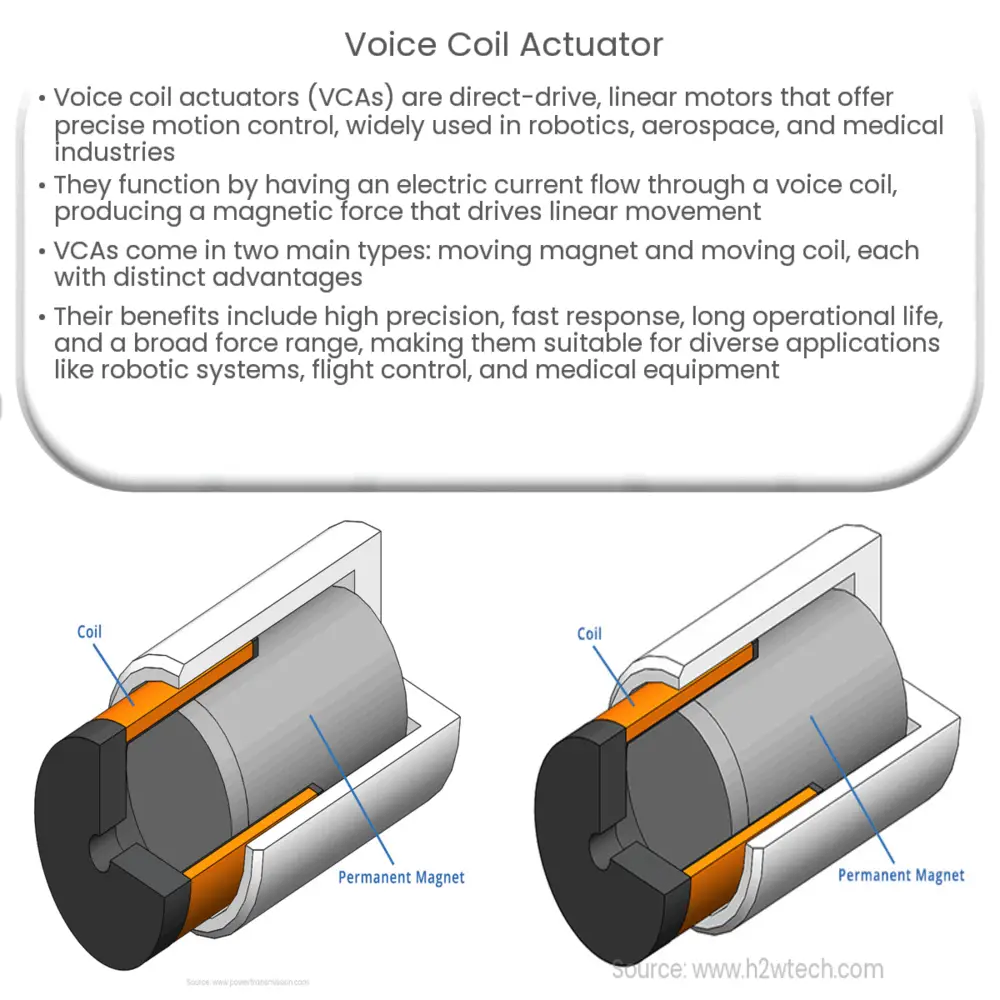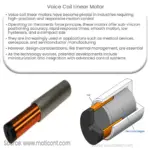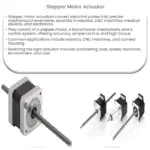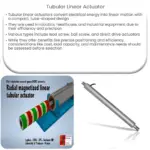Voice coil actuators are precise, direct-drive linear motors used in robotics, aerospace, medical, optics, and automotive applications for accurate motion control.

Voice Coil Actuators: A Comprehensive Overview
Introduction to Voice Coil Actuators
Voice coil actuators (VCAs) are a type of direct-drive, linear motor that generate precise, controlled linear motion. They have numerous applications in industries such as robotics, aerospace, and medical equipment. In this article, we will explore the working principles, types, and advantages of voice coil actuators.
Working Principle of Voice Coil Actuators
A voice coil actuator consists of three main components: the voice coil, the permanent magnet, and the magnetically permeable core. The voice coil is a coil of wire, typically made of copper, wound around a bobbin. The permanent magnet generates a static magnetic field, while the core is used to concentrate the magnetic flux and provide a low-reluctance path for the flux lines.
When an electric current flows through the voice coil, it produces a magnetic field. This magnetic field interacts with the static magnetic field generated by the permanent magnet, creating a force. The direction and magnitude of this force are determined by the direction and magnitude of the current flowing through the voice coil. This force is then transferred to the load, causing it to move in a linear motion.
Types of Voice Coil Actuators
There are two main types of voice coil actuators: moving magnet and moving coil. In both types, the basic working principle remains the same, but the construction and arrangement of components differ.
Moving Magnet VCAs
In a moving magnet VCA, the voice coil is stationary, while the permanent magnet is attached to the moving part of the actuator. This design has a lower moving mass and reduced inertia, allowing for faster response times and higher acceleration rates. However, the moving magnet design may be more susceptible to external magnetic fields and may require additional shielding.
Moving Coil VCAs
In a moving coil VCA, the permanent magnet is stationary, while the voice coil is attached to the moving part of the actuator. This design has the advantage of better heat dissipation, as the heat generated in the voice coil can be easily transferred to the surrounding environment. However, the moving coil design generally has a higher moving mass and inertia, which may result in slower response times and lower acceleration rates compared to moving magnet VCAs.
Advantages of Voice Coil Actuators
Voice coil actuators offer several advantages over other types of linear actuators, such as:
- High precision: VCAs are capable of providing extremely precise positioning and control, with resolutions down to the nanometer range.
- Fast response: Due to their low moving mass and direct-drive design, VCAs can achieve very high acceleration rates and fast response times.
- Long life: With no mechanical contact between the moving parts, VCAs have a long operational life and require minimal maintenance.
- Wide force range: The force generated by VCAs can be easily controlled by adjusting the current supplied to the voice coil, allowing for a wide range of forces to be produced.
Applications of Voice Coil Actuators
Voice coil actuators have a wide range of applications across various industries, including:
- Robotics: VCAs are used in robotic systems for precise positioning and control of robotic arms, end-effectors, and other components.
- Aerospace: In aerospace applications, VCAs provide accurate and reliable control of flight surfaces, gimbal systems, and vibration isolation systems.
- Medical: VCAs are employed in medical equipment such as surgical robots, drug delivery systems, and diagnostic imaging devices for precise motion control and positioning.
- Optics: VCAs are used in optical systems for fine positioning and alignment of lenses, mirrors, and other optical components.
- Automotive: Voice coil actuators can be found in active suspension systems and adaptive headlight systems for improved vehicle performance and safety.
Design Considerations for Voice Coil Actuators
When selecting a voice coil actuator for a specific application, several factors must be considered:
- Force requirements: The actuator must be capable of generating the necessary force to move the load. This depends on the weight of the load, the friction in the system, and the desired acceleration rate.
- Stroke length: The actuator must have a sufficient stroke length to accommodate the required range of motion for the application.
- Resolution and accuracy: The actuator should provide the necessary resolution and accuracy for the specific application, which may vary depending on the requirements of the system.
- Thermal management: The actuator must be able to dissipate the heat generated during operation to prevent overheating and ensure reliable performance.
- Size and weight constraints: The actuator should fit within the available space and meet any weight restrictions for the specific application.
Conclusion
Voice coil actuators are a versatile and powerful technology that enables precise linear motion control across various industries. With their high precision, fast response, long operational life, and wide force range, VCAs are an ideal choice for many applications, including robotics, aerospace, medical, optics, and automotive systems. By carefully considering the design factors and selecting the appropriate type of VCA, engineers can create efficient, reliable, and high-performance solutions for a wide range of linear motion challenges.




